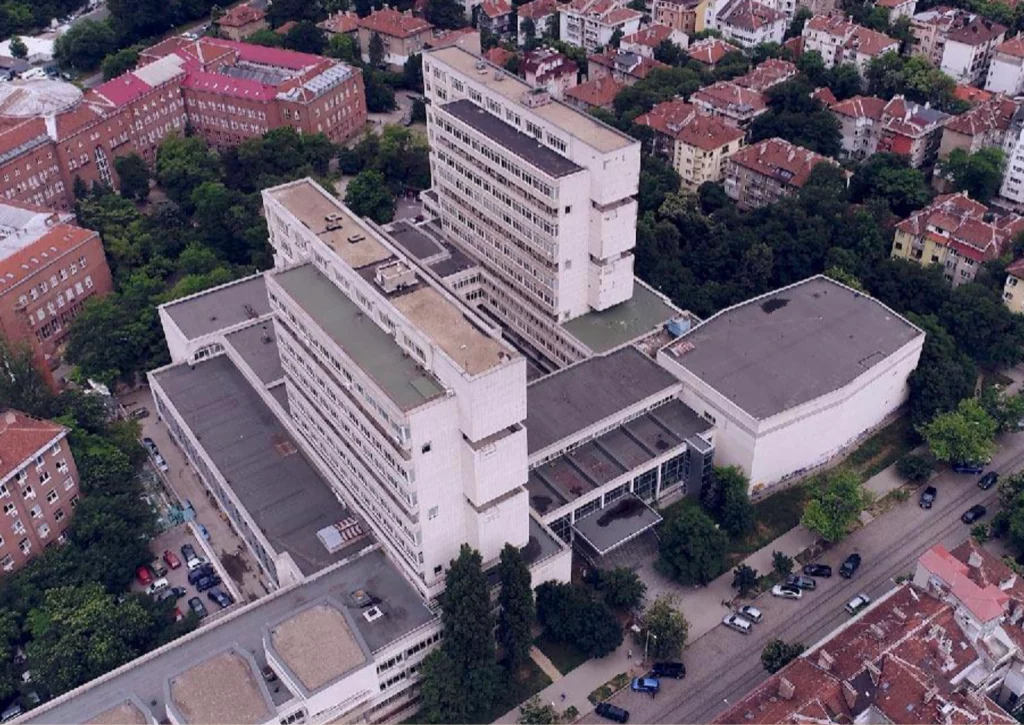The University of Architecture, Civil Engineering, and Geodesy (UACEG) is Bulgaria’s oldest technical school and one of the prestigious architectural and civil engineering higher education institutions. It is located in Sofa, the capital of Bulgaria, and it has educated over 5700 architects and 25,000 engineers during the course of its history.
UACEG provides recognizable academic degrees for many technical specialties, such as architecture, geodesy, hydraulic engineering, structural engineering, water supply and sewerage, and road and railway construction.
Location
UACEG’s main campus is located in Sofia, Bulgaria’s capital. Many international students come to Bulgaria to study at the University of Architecture, Civil Engineering, and Geodesy, thanks to its great reputation in teaching engineering and technical specialties.
Sofia is the capital and largest city of Bulgaria, and is one of the greenest towns in Europe, with hundreds of parks and gardens. When you visit Sofia, you will notice that it hosts the most prominent educational institutions in the country, including universities, colleges, and middle schools; all of which provide education according to European standards. Sofia is one of Europe’s oldest cities, with a history dating back over 7000 years. Sofi has served as a strategic site throughout history because of its important location at the foothills of Vitosha Mountain.
History
The foundation of UACEG occurred after a proclamation issued by Bulgarian Tsar Boris III in 1941, who ordered the establishment of a Higher Technical School to teach engineering and technical sciences. In 1942, the university was established as a Higher Technical School, but in 1945, it became a State Polytechnic.
The Engineering-Construction Institute (ISI) was founded in 1953 and was renamed the Higher Institute of Engineering and Construction in 1963, and later on, it became the Higher Institute of Architecture and Construction (VIAS) in 1977. However, VIAS became the University of Architecture, Civil Engineering and Geodesy (UACEG) in 1995, when the National Assembly issued a special order in that year to enhance the role and position of the university.
Faculties & Departments
Because it has only 4000 students, many people consider UACEG a small institution but there are nearly 700 experts and lecturers teaching at the university. The main faculties and departments of UACEG include:
- Faculty of Architecture
- Faculty of Transportation Engineering
- Faculty of Geodesy
- Faculty of Structural Engineering
- Faculty of Hydrotechnics
- Department of applied linguistics and physical culture
Students at UACEG have access to a library, sports facilities, and administrative services. They also enjoy other services that are rare to find in other universities, such as study abroad and exchange programs.
Admission
If you’re interested in studying at UACEG, you must complete a formal application and bring multiple documents. You may need to spend a preparatory year before enrolling in the university’s courses. After finishing the university’s preparatory year, EU students must take a mathematics entrance exam as part of the admissions procedure. If you want to know the cost of the preparatory year, we can give you an idea about it like this:
Preparation course for international students in Bulgarian language studies (1 year): €3400
Preparation course for international students – English language study (1 year): €4200
If you are serious about enrolling in UACEG, you must visit the university’s official website to decide on the right technical specialty for you. Next, you should begin the process of enrollment by completing the application form and sending all the necessary documents.
Student Life & Living Expenses
Bulgarian leva (BGN) is the currency that you will dominantly use during your stay in Bulgaria. Rent is reasonably priced, ranging between 300 and 400 EUR depending on the building, neighborhood, and whether you choose a private or shared apartment. Transportation is also cheap. To give you an idea, a one-way public transportation ticket costs only 1.60 BGN (around 0.80 EUR).
Sofia is a fantastic city for students, with plenty of things to do, particularly around the building and facilities of UACEG. Most prominent Bulgarian colleges are located in Sofia, and there are several international activities held there every week, so you will have no trouble making friends with other international students.
Also, most tourist attractions, restaurants, and pedestrian areas are in the city center, near the university. You need to walk only 10 minutes to reach Vasil Levski National Stadium, which offers a variety of sports activities, such as football, fencing, boxing, and even dancing. The stadium is situated in Sofia’s largest park (Borisova Gradina Park). You can choose this place to enjoy a picnic with your friends there in the summer. You can also practice winter sports, such as ice skating, in the winter.
There are several things and activities that you can do in Sofia. Here is a list that contains some of them:
- Participate in various sports activities in the city.
- Walk along Graf Ignatiev Street or Vitosha Boulevard
- Try the local cuisine and explore restaurants
- Visit popular attractions spots in the city center
- Ride a bike to discover the city
- Visit bowling clubs with your friends
- Visit Iskar and Erma Gorges near Sofia
- Visit Plovdiv, Bulgaria’s second-largest city,
- Visit other towns, such as Koprivshtitsa.

